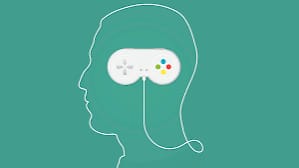Health
Understanding Bipolar Disorder: How It Differs and Relates to Other Mental Health Conditions

Understanding Bipolar Disorder: How It Differs and Relates to Other Mental Health Conditions
Bipolar disorder is a complex and often misunderstood mental health condition that affects millions across the globe. It can significantly impact a person’s mood, energy levels, and ability to function. This blog explores what bipolar disorder is, how it compares with other disorders like ADHD, borderline personality disorder, and schizophrenia, and how it is diagnosed and treated.
What Bipolar Disorder Is
So, what bipolar disorder is at its core, is a mood disorder characterized by episodes of mania (extremely elevated mood and energy) and depression (low mood and energy). These mood swings can be extreme and are typically more severe than the regular ups and downs most people experience.
Unlike other mood shifts, the symptoms of bipolar disorder can last for days or weeks and often disrupt a person’s daily life, relationships, and work. People may find it difficult to understand what bipolar disorder is because it often overlaps with other psychological conditions, leading to misdiagnosis.
In medical practice, defining what bipolar disorder is involves a detailed psychiatric evaluation, medical history, and sometimes brain imaging or blood tests to rule out other issues.
Bipolar Disorder vs Borderline Personality Disorder
One of the most common confusions in psychology is the comparison of bipolar disorder vs borderline personality disorder. Though both involve mood instability, they are fundamentally different. In bipolar disorder vs borderline personality disorder, the primary distinction is that bipolar disorder mood swings are episodic, while borderline personality disorder involves moment-to-moment emotional reactivity and unstable relationships.
Understanding bipolar disorder versus borderline personality disorder is critical for proper treatment. People with borderline personality disorder often have a chronic fear of abandonment, impulsive behavior, and identity disturbance, whereas someone with bipolar disorder may experience periods of normal functioning between episodes.
Clinicians use specific diagnostic tools to differentiate between bipolar disorder versus borderline personality disorder, ensuring that treatment plans are accurate and effective.
Bipolar Disorder and Schizophrenia
Another commonly misunderstood comparison is bipolar disorder and schizophrenia. Though they are both serious mental illnesses, they affect the brain in very different ways. People often confuse bipolar disorder and schizophrenia due to the presence of psychosis (delusions and hallucinations) in some cases of bipolar mania.
However, bipolar disorder and schizophrenia have unique characteristics. While bipolar episodes are mood-based, schizophrenia is primarily a thought disorder with symptoms like disorganized thinking, hallucinations, and flat affect. Understanding the relationship between bipolar disorder and schizophrenia helps mental health professionals provide accurate treatment and reduce stigma.
Some patients may exhibit features of both conditions, referred to as schizoaffective disorder, which lies somewhere between bipolar disorder and schizophrenia.
Bipolar Disorder vs ADHD
Another significant point of confusion is bipolar disorder vs ADHD. Both conditions can include impulsivity, distractibility, and poor concentration. However, in the case of bipolar disorder vs ADHD, the difference lies in the pattern of symptoms. ADHD is a neurodevelopmental disorder present from childhood, while bipolar disorder typically develops later and includes mood episodes.
Parents and clinicians must carefully analyze the child’s history when distinguishing between bipolar disorder vs ADHD, as misdiagnosis could lead to inappropriate treatment.
Also, there is considerable comorbidity between bipolar disorder and ADHD, meaning a person can have both, making treatment more complex.
Drugs for Bipolar Disorder
Treatment typically involves a combination of medication and therapy. One of the first lines of treatment includes drugs for bipolar disorder that stabilize mood. Common drugs for bipolar disorder include:
Mood stabilizers like lithium
Antipsychotic medications
Antidepressants, carefully prescribed to avoid triggering mania
It’s important to note that drugs for bipolar disorder must be prescribed and monitored by a qualified psychiatrist to avoid side effects or mood destabilization. People often ask if these drugs for bipolar disorder are lifelong—while not always, long-term treatment is usually necessary.
Lithium for Bipolar Disorder
One of the most well-known drugs for bipolar disorder is lithium. Lithium for bipolar disorder has been a gold-standard treatment for decades, especially for reducing the risk of manic episodes and suicidal behavior.
However, using lithium for bipolar disorder requires regular blood tests due to its narrow therapeutic window. Not everyone responds well to lithium for bipolar disorder, but many do find long-term stability and functionality with it.
Psychiatrists in the USA, UK, Canada, and Australia frequently prescribe lithium for bipolar disorder as a cornerstone medication.
Psychotherapy for Bipolar Disorder
While medication plays a major role, psychotherapy for bipolar disorder is equally essential. The most effective forms of psychotherapy for bipolar disorder include:
Cognitive Behavioral Therapy (CBT)
Interpersonal and Social Rhythm Therapy
Family-focused therapy
Psychotherapy for bipolar disorder helps patients recognize triggers, manage stress, and improve communication. In outpatient settings across America, UK, and beyond, psychotherapy for bipolar disorder is often part of a comprehensive care plan.
Ongoing psychotherapy for bipolar disorder can also reduce the risk of relapse and improve quality of life.
Test for Bipolar Disorder
There is no single lab test for bipolar disorder, but diagnosis involves structured clinical interviews, DSM-5 criteria, and mood questionnaires. A test for bipolar disorder might include tools like the:
Mood Disorder Questionnaire (MDQ)
Young Mania Rating Scale (YMRS)
A reliable test for bipolar disorder must also rule out conditions like ADHD and borderline personality disorder, which share overlapping symptoms.
In the USA, Canada, and Australia, mental health professionals are trained to use a combination of assessment tools and patient history as a test for bipolar disorder.
Is Bipolar Disorder Genetic?
Many people wonder, is bipolar disorder genetic? Research suggests a strong genetic component. If a first-degree relative (parent or sibling) has the condition, the risk increases significantly.
So, is bipolar disorder genetic alone? Not exactly. While genes play a major role, environmental factors like trauma, substance abuse, or high stress also contribute.
The short answer to “is bipolar disorder genetic” is yes, but it’s a combination of nature and nurture. Genetic studies in North America and Europe continue to explore which specific genes are involved.
What Are the Bipolar Disorder Symptoms?
Recognizing what are the bipolar disorder symptoms can help in early detection and management. The primary symptoms fall under manic and depressive episodes:
Manic symptoms:
Elevated mood
Increased activity
Decreased need for sleep
Grandiosity
Impulsiveness
Depressive symptoms:
Fatigue
Sadness
Guilt
Loss of interest
Suicidal thoughts
If you’re wondering what are the bipolar disorder symptoms in teenagers or children, they may present differently, often with irritability or school problems.
Understanding what are the bipolar disorder symptoms can empower families to seek early treatment and avoid complications.
When Does Bipolar Disorder Develop?
Another key question is, when does bipolar disorder develop? Most people are diagnosed in late adolescence or early adulthood, though it can appear earlier or later.
So when does bipolar disorder develop most commonly? Typically between ages 18 to 30. However, childhood and late-onset cases do exist.
Clinicians emphasize tracking mood changes over time to determine when bipolar disorder develops and ensure early intervention.
Does Bipolar Disorder Get Worse With Age?
One of the most concerning questions for patients is: does bipolar disorder get worse with age? The answer is—it depends. Without treatment, bipolar disorder can become more severe, with more frequent and intense episodes.
So, does bipolar disorder get worse with age if treated? Usually not. With proper medication, therapy, and lifestyle management, most people see improvement or stabilization over time.
However, if untreated, does bipolar disorder get worse with age? Yes. That’s why early diagnosis and long-term care are critical.
How Bipolar Disorder Is Treated
Understanding how bipolar disorder is treated is essential for recovery. The core components include:
Medication (e.g., lithium, antipsychotics)
Therapy (CBT, psychoeducation)
Lifestyle changes (sleep, diet, exercise)
Knowing how bipolar disorder is treated also means understanding that it’s a lifelong condition. Support from family and access to mental health services in the US, UK, Canada, and Australia improve outcomes.
Effective care plans that address how bipolar disorder is treated must be individualized and long-term.
Final Thoughts
From understanding what bipolar disorder is to exploring how bipolar disorder is treated, the journey to mental wellness starts with education. Whether you’re comparing bipolar disorder vs borderline personality disorder, or asking does bipolar disorder get worse with age, the key is recognizing symptoms early and seeking professional help.
By breaking the stigma and improving awareness in places like America, the UK, Canada, and Australia, we can help more individuals lead fulfilling lives with bipolar disorder.

Food
Why is Gardening So Relaxing? The Secret Behind Nature’s Therapy

Why is Gardening So Relaxing? The Secret Behind Nature’s Therapy
If you have ever asked yourself “Why is gardening so relaxing?”, you are not alone. Millions of people across the world have discovered the peace, joy, and satisfaction that comes from tending to plants, watching flowers bloom, or simply digging in the soil. But what makes this activity so therapeutic? Science and psychology both point to fascinating answers that explain why gardening is relaxing, how gardening reduces stress, and why gardening is so satisfying.
Why is Gardening So Relaxing?
One of the most common questions is “Why is gardening so relaxing?”. The answer lies in the combination of physical activity, fresh air, sunshine, and the calming effect of nature. Studies have shown that exposure to green spaces lowers cortisol levels—the hormone responsible for stress—making people feel calmer and happier. This explains why gardening is calming and why many consider it an effective stress management practice.
How Gardening Reduces Stress Naturally
Another big benefit is how gardening reduces stress. Whether it’s planting vegetables, trimming roses, or watering herbs, these small acts require mindfulness. When you focus on the present moment, your mind shifts away from daily worries. That’s why many psychologists recommend gardening as a natural therapy. The repetitive, soothing tasks explain why gardening is relaxing and also why gardening is amazing for mental health.
Why is Gardening So Satisfying?
People often wonder, “Why is gardening so satisfying?” The sense of achievement is one of the biggest reasons. Watching seeds grow into beautiful plants gives a feeling of accomplishment. You get to nurture life, and this responsibility brings deep emotional satisfaction. This is another explanation of why gardening is relaxing, since fulfillment and pride play key roles in overall well-being.
Why is Gardening Calming for the Mind?
So, why is gardening calming? Beyond the science of stress reduction, gardening connects humans with nature in a unique way. Breathing fresh air, feeling the soil, and enjoying colorful blooms activate the brain’s relaxation response. This helps balance emotions, lowers anxiety, and even improves sleep quality. It’s no surprise that so many say gardening is amazing.
Does Gardening Reduce Stress in Daily Life?
Many ask, “Does gardening reduce stress?” The answer is a resounding yes. Research shows that just 20 minutes of gardening can improve mood and lower anxiety. Unlike other activities, gardening combines movement, creativity, and nature exposure, all of which help explain why gardening is relaxing.
Gardening is Amazing: Benefits Beyond Relaxation
People often say gardening is amazing not only because it relaxes the mind, but also because it improves physical health. Digging, planting, and carrying pots are forms of low-impact exercise, which help strengthen muscles and improve flexibility. This physical activity, combined with mental relaxation, reveals both why gardening is calming and why gardening is so satisfying.
Why Gardening is Relaxing for Different Ages
Another reason why gardening is relaxing is its universal appeal. Children enjoy playing with soil, adults find joy in maintaining plants, and seniors benefit from the soothing nature of gardening. For every age group, the benefits of how gardening reduces stress remain consistent. That’s why people across generations agree that gardening is amazing.
Why is Gardening So Relaxing? A Spiritual Connection
For some, why gardening is relaxing has a spiritual explanation. Being surrounded by plants gives a feeling of closeness to nature and life itself. Many gardeners say they feel grounded, connected, and even more grateful for the simple things. This deeper perspective explains why gardening is calming and why gardening is so satisfying at a soul level.
Final Thoughts: Why is Gardening So Relaxing?
So, why is gardening so relaxing? The answer is clear—it combines stress reduction, physical activity, mindfulness, and emotional satisfaction. When you see how quickly and effectively gardening reduces stress, you understand why gardening is calming. Add to that the joy of creation and fulfillment, and you realize why gardening is so satisfying.
In the end, it’s safe to say gardening is amazing, not only for mental health but also for happiness, peace, and balance in life.

Fitness
Vegan Meal Prep Ideas for a Healthy, Affordable, and Stress-Free Week

Vegan Meal Prep Ideas for a Healthy, Affordable, and Stress-Free Week
If you’re looking to save time, eat healthier, and cut down on stress, diving into vegan meal prep ideas is the way to go. Prepping meals ahead of time not only keeps you consistent with your health goals but also makes plant-based eating simple and affordable. Whether you’re new to meal prepping or a seasoned pro, this guide will help you with vegan meal prep recipes, tips, and hacks to make your week smooth and delicious.
Why Try Vegan Meal Prep?
Meal prepping is a game-changer for anyone with a busy lifestyle. With the right vegan meal prep ideas, you’ll enjoy:
Consistency: Sticking to healthy meals without last-minute takeout temptations.
Savings: Mastering cheap vegan meal prep means eating well without breaking the bank.
Time efficiency: A few hours on the weekend saves countless hours during the week.
Variety: Using creative vegan meal prep recipes ensures you won’t get bored.
Easy Vegan Meal Prep Ideas to Try
Here are some easy vegan meal prep strategies you can start using right away:
Batch Cooking Grains & Legumes
Cook quinoa, rice, lentils, and beans in bulk. These staples are the backbone of most vegan meal prep ideas and pair well with veggies, sauces, or salads.
Roast a Tray of Vegetables
Sweet potatoes, broccoli, carrots, and zucchini make versatile additions to any dish. This is a must for easy vegan meal prep because roasted veggies reheat beautifully.
Overnight Oats & Chia Pudding
Breakfast sorted! These quick vegan meal prep recipes give you grab-and-go options that are filling and nutritious.
Homemade Sauces & Dressings
A creamy tahini dressing or spicy peanut sauce turns the simplest bowl into a gourmet meal. Having sauces ready enhances all your vegan meal prep ideas.
Cheap Vegan Meal Prep Tips
Many people think eating plant-based is expensive, but cheap vegan meal prep proves otherwise. Here’s how:
Buy beans, lentils, and grains in bulk.
Use seasonal vegetables for your vegan meal prep recipes.
Plan meals around versatile ingredients like chickpeas and tofu.
Repurpose leftovers to create multiple vegan meal prep ideas with minimal effort.
By planning smart, cheap vegan meal prep keeps your grocery bill low while giving you endless variety.
5 Delicious Vegan Meal Prep Recipes
Here are some simple and tasty vegan meal prep recipes you can batch cook:
Chickpea Salad Wraps – Protein-packed and perfect for lunchboxes.
Lentil Curry with Rice – A staple in easy vegan meal prep that freezes well.
Roasted Veggie Buddha Bowls – Colorful and customizable with your favorite grains.
Black Bean Chili – Great for dinner and excellent for cheap vegan meal prep.
Tofu Stir-Fry with Brown Rice – Quick, filling, and a go-to for busy nights.
Each of these meals highlights how vegan meal prep ideas can be flavorful, budget-friendly, and incredibly satisfying.
How to Stay Motivated with Vegan Meal Prep
Rotate your favorite vegan meal prep recipes weekly to keep things fresh.
Store meals in clear containers so you can “see” your options.
Mix and match proteins, veggies, and grains for endless vegan meal prep ideas.
Remember: easy vegan meal prep works best when you start small and build habits gradually.
Final Thoughts
Exploring different vegan meal prep ideas makes it simple to stick to your health goals while saving time and money. From quick breakfasts to hearty dinners, there’s no shortage of vegan meal prep recipes to keep your week exciting. Whether you’re aiming for easy vegan meal prep to save time or focusing on cheap vegan meal prep to stretch your budget, the possibilities are endless.
Start small, experiment with flavors, and before you know it, you’ll master the art of vegan meal prep. With a little planning, these vegan meal prep ideas will help you eat better, save money, and live healthier—all while enjoying every bite.

Food
The Ultimate Guide to Plant Based Snacks for a Healthy Lifestyle

The Ultimate Guide to Plant Based Snacks for a Healthy Lifestyle
If you’re looking for delicious, nutritious, and satisfying plant based snacks, you’re in the right place. With the rising popularity of healthier eating habits, people are searching for the best plant based snacks that are easy, tasty, and packed with nutrients. Whether you want something quick for work, fun ideas for kids, or high protein plant based snacks, this guide covers everything you need.
Why Choose Plant Based Snacks?
The demand for healthy plant based snacks is growing as more people shift toward sustainable, whole-food diets. Unlike processed junk food, whole food plant based snacks are made from nuts, seeds, fruits, vegetables, and grains, which provide energy without unnecessary additives.
Brands like Back to Nature plant based snacks have made it easier than ever to grab wholesome options when life gets busy. Whether you’re shopping at Whole Foods plant based snacks aisles or making your own at home, there’s no shortage of choices.
Top Benefits of Plant Based Snacks
Nutrient-Rich – Healthy vegan plant based snacks are packed with fiber, vitamins, and minerals.
Protein-Packed – With high protein plant based snacks, you can fuel workouts and stay full longer.
Family-Friendly – There are plenty of fun and delicious plant based snacks for kids that even picky eaters will love.
Convenient – Plant based snacks on the go are perfect for travel, office, or school lunches.
Sustainable – Choosing nature plant based snacks supports eco-friendly living.
Easy Plant Based Snack Ideas
Looking for inspiration? Here are some quick plant based snacks ideas you can try today:
Roasted chickpeas (great plant based snacks for work)
Apple slices with almond butter (easy plant based snacks)
Trail mix with nuts, seeds, and dried fruit (instant healthy plant based snacks)
Veggie sticks with hummus (plant based snacks recipes)
Energy balls made with oats and dates (whole food plant based snacks)
These options are versatile, portable, and perfect as plant based snacks on the go.
The Growing Plant Based Snacks Market
The global healthy plant based snacks market is expanding rapidly, with new innovations hitting shelves every year. From protein bars to chips and cookies, the variety of best plant based snacks has never been greater. Consumers are not only looking for flavor but also sustainability, making back to nature plant based snacks and other eco-conscious brands top choices.
Plant Based Snacks for Every Lifestyle
For Work: Keep plant based snacks for work like trail mix or roasted edamame at your desk.
For Kids: Fun and colorful plant based snacks for kids like fruit kabobs or mini veggie wraps make healthy eating exciting.
For Busy Days: Stock up on instant healthy plant based snacks like bars or nut packs.
Final Thoughts
Incorporating plant based snacks into your routine is one of the easiest ways to eat healthier without sacrificing taste. Whether you prefer whole food plant based snacks, store-bought options like Back to Nature plant based snacks, or homemade plant based snacks recipes, there’s something for everyone.
As the healthy plant based snacks market continues to grow, the possibilities are endless. So next time you need a quick bite, skip the junk food and reach for the best plant based snacks—your body and the planet will thank you.

-

 Business2 months ago
Business2 months ago☕️The Ultimate Coffee Lover’s Guide: From Caffeine in a Cup of Coffee to Turkish Coffee Delights
-

 Business2 months ago
Business2 months agoThe Many Faces of “Future”: Markets, Farming, Music, AI, and a Better Tomorrow
-

 Business2 months ago
Business2 months agoIn today’s fast‑moving economy, what industry is slowly dying and why?
-

 Health2 months ago
Health2 months agoA Journey Through Life’s Firsts: Health, Gaming, and Experiences That Shape Us
-

 Lifestyle2 months ago
Lifestyle2 months agoWhat is life Philosophy?
-

 Tech1 month ago
Tech1 month agoUltimate Secret Android Apps You’ll Actually Love
-

 Business2 months ago
Business2 months agoRussia’s Energy Ministry Launches Crypto Mining Register
-

 Lifestyle2 months ago
Lifestyle2 months ago🐦 The Ultimate Bird Watching Guide: Best Birdwatching Locations & Tips for Beginners



